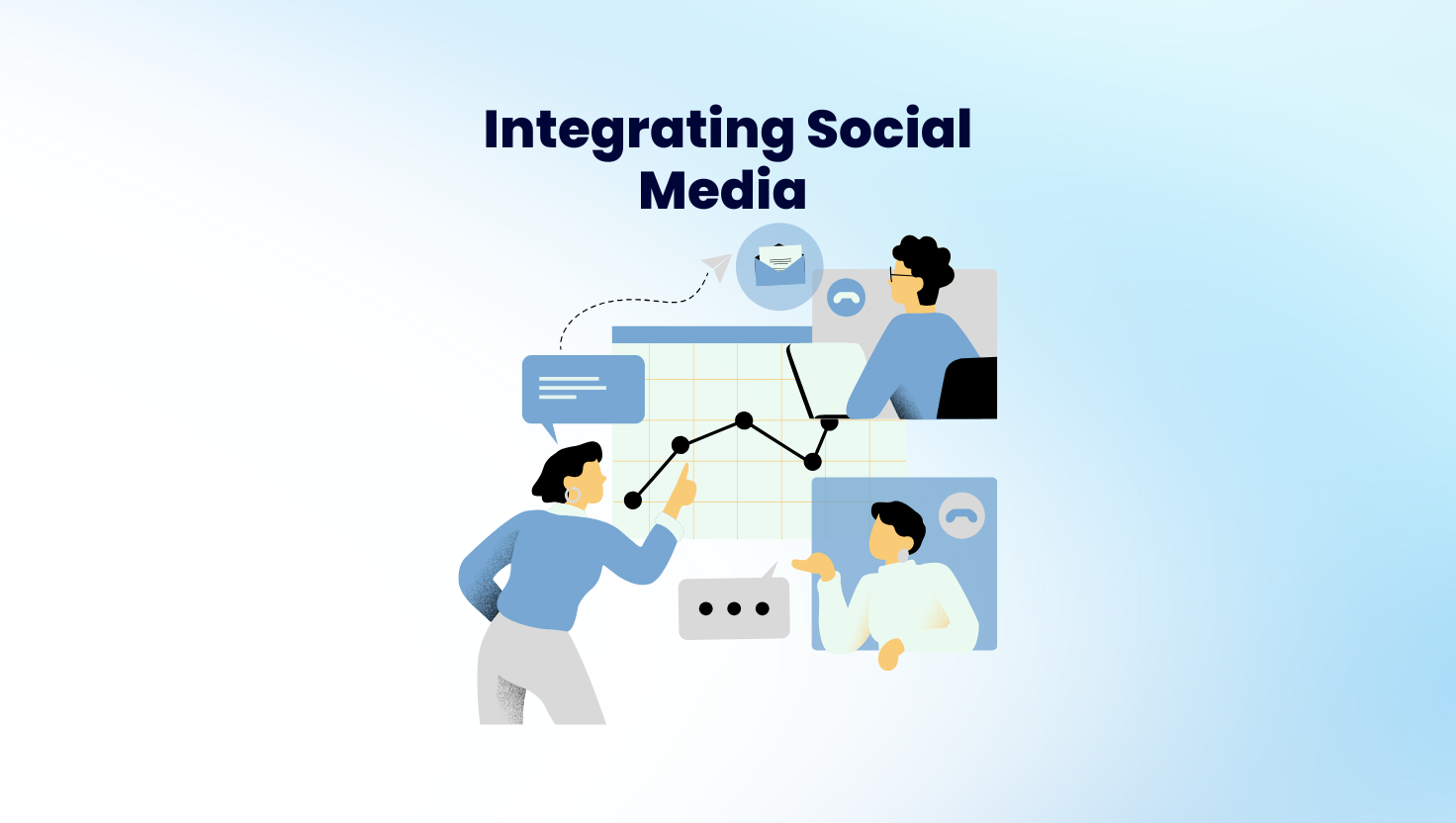
18 Feb How to Integrate Social Media into Your Website for Maximum Engagement
Social media plays a crucial role in modern digital marketing, helping businesses connect with their audience, boost brand awareness, and drive website traffic. By integrating social media into your website, you can enhance engagement, encourage interactions, and create a seamless user experience. But how can you effectively incorporate social media into your site to maximize engagement?
This guide explores the best ways to integrate social media into your website, ensuring that visitors can easily interact with your brand across multiple platforms.
1. Add Social Media Sharing Buttons
One of the easiest ways to increase engagement is by adding social media sharing buttons to your website. These buttons allow visitors to share blog posts, products, and other content directly to their social media profiles with a single click.
Best Placement:
- Blog posts.
- Product pages.
- News articles.
- Landing pages.
Pro Tip: Use floating social media buttons that stay visible as users scroll through your site. This ensures they can share content at any point without having to scroll back up.
2. Embed Social Media Feeds
Embedding a live social media feed on your website keeps your content fresh and encourages visitors to engage with your social platforms. Whether it’s Instagram photos, Twitter updates, or Facebook posts, a dynamic social media feed can make your site feel more interactive.
Best Placement:
- Homepage.
- Blog sidebar.
- Footer section.
- About page.
How to Do It:
Most social platforms offer embed codes that you can easily place on your website. Additionally, WordPress and other CMS platforms have plugins that simplify the process.
3. Use Social Login for Easy Access
Allowing users to sign in to your website using their social media accounts simplifies the registration process and improves user experience. Social login options like Google, Facebook, or LinkedIn eliminate the need for users to create new accounts and remember additional passwords.
Benefits of Social Login:
- Faster sign-up process.
- Increases user retention.
- Reduces abandoned registrations.
- Allows for personalized content.
Where to Implement:
- E-commerce checkout pages.
- Membership sites.
- Community forums.
- Online learning platforms.
4. Encourage User-Generated Content (UGC)
User-generated content (UGC) is one of the most effective ways to build trust and encourage engagement. Encourage your customers to share their experiences with your brand on social media and feature their content on your website.
Ways to Implement UGC:
- Showcase customer reviews and testimonials.
- Feature social media posts from users.
- Run hashtag campaigns (e.g., #MyBrandExperience).
- Allow customers to upload images/videos of your products.
Why It Works:
Customers are more likely to trust content shared by real users rather than branded promotions. Displaying authentic social proof builds credibility and encourages more engagement.
5. Optimize Social Media Metadata for SEO
Properly configuring your social media metadata ensures that your content looks great when shared on platforms like Facebook, Twitter, and LinkedIn. This includes setting up Open Graph tags (OG tags) and Twitter Cards, which control how your website’s links appear on social media.
Essential Metadata Elements:
Title: The headline of your content.
Description: A short preview of what the page is about.
Image: A featured image to attract attention.
URL: The correct link to your page.
How to Add Social Metadata:
For WordPress users, SEO plugins like Yoast SEO and Rank Math make it easy to configure social metadata. If you’re coding manually, add OG tags to your website’s <head> section.
6. Add Click-to-Tweet Quotes
Click-to-Tweet quotes allow visitors to instantly share snippets of your content on Twitter, making it easier for your audience to spread your message. This feature is particularly useful for blog posts, articles, and educational content.
Best Practices for Click-to-Tweet:
- Keep quotes short and impactful.
- Include relevant hashtags.
- Mention your Twitter handle for more visibility.
Example:
“Want to increase engagement on your website? Integrate social media seamlessly to keep your audience engaged! #SocialMediaMarketing” [Click to Tweet]
7. Integrate Social Media into Customer Support
Social media is not just for marketing—it can also serve as a customer support channel. Adding a live chat feature via Facebook Messenger, WhatsApp, or Twitter DMs can improve response times and provide instant assistance to visitors.
Why Use Social Media for Support?
- Faster responses than email support.
- Increases customer satisfaction.
- Builds trust with potential customers.
How to Implement:
- Add a Messenger chat widget to your website.
- Provide a WhatsApp button for direct communication.
- Use Twitter as a customer service channel for quick responses.
8. Run Contests and Giveaways
Contests and giveaways are powerful engagement tools that encourage social media interactions and drive traffic to your website. A simple contest where users enter by liking, sharing, or tagging friends can significantly increase brand exposure.
Types of Contests:
- Like & Share Contests – Users share your post to enter.
- Photo Contests – Users submit images related to your brand.
- Comment Contests – Users comment their thoughts for a chance to win.
Best Placement for Contests:
- Dedicated landing pages.
- Pop-up notifications.
- Blog announcements.
Let PT. KDN Help You Build a Social-Integrated Website!
Integrating social media into your website doesn’t have to be complicated. At PT. KDN, we specialize in developing high-performance, fully integrated websites that help businesses boost engagement, increase traffic, and strengthen brand presence.
Whether you need seamless social media integration, a custom website, or an e-commerce platform, our team ensures your website is built for maximum performance.


Sorry, the comment form is closed at this time.